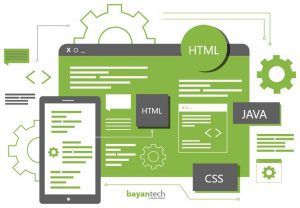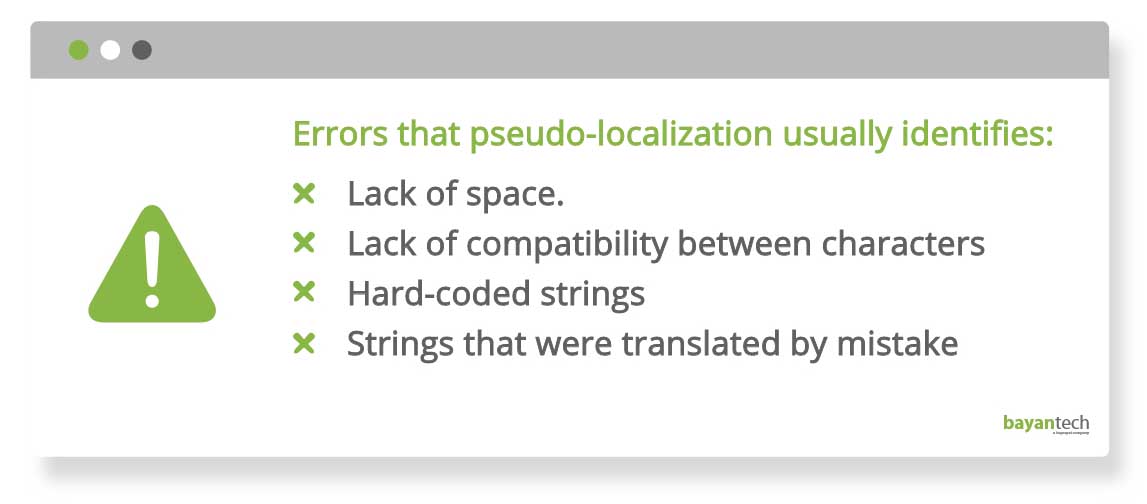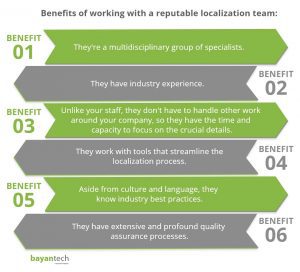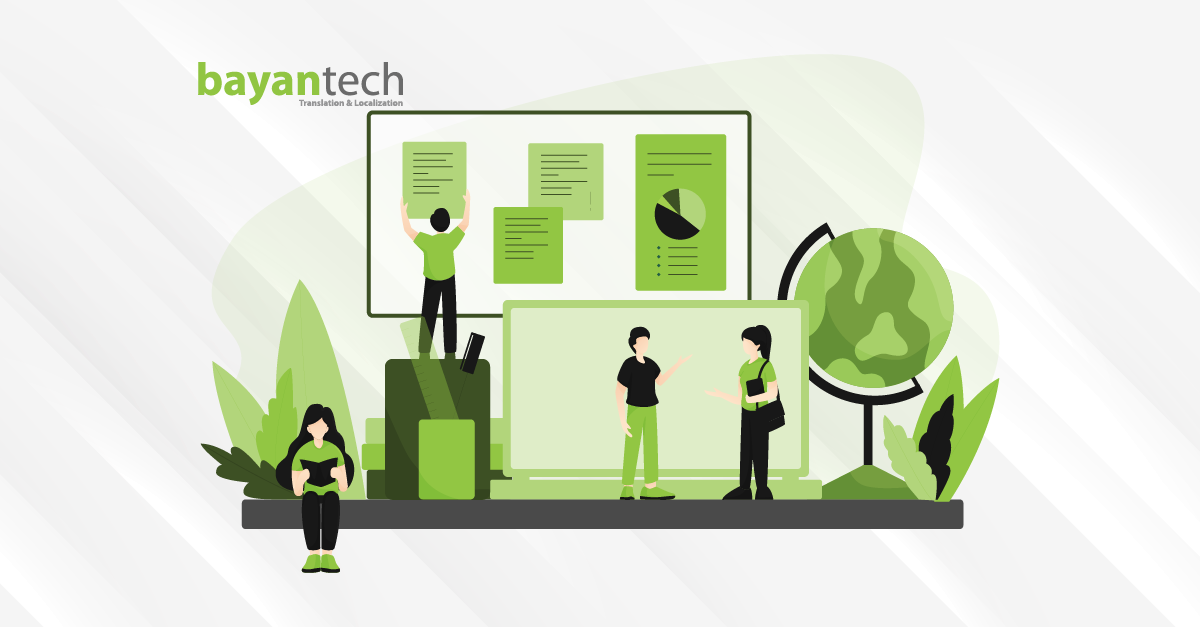Technology has made it possible for information to flow at an unprecedented speed, across borders. Today, it’s easy to buy a product that comes from abroad. Or to hire services provided by a company in a different continent. Or to enjoy digital tools created by foreign teams, working hundreds of miles away from our homes and offices. All of this would be impossible without software localization.
Software localization, meaning the process of linguistically, technically, and culturally adapting an application or program to different international markets. This process puts the needs, preferences, and regulations of this market at the forefront. Localization allows us to deliver a tailored experience to customers across locales. And it should be at the core of your company’s international expansion strategy. Today, 85.3% of internet users prefer to read product information in their native language. It is practically impossible to think of a global strategy that doesn’t involve localization.
Whether you’re a growing startup or an established company developing its first digital product with an international outlook, software localization should be among your priorities. And the sooner you embark on it, the better.
How to Bolster Software Localization Best Practices
Before we get into the topic of this article (software localization best practices), let’s take a look at some preliminary steps. How should you set the stage for a successful localization process?
First and foremost, you need insider knowledge into your target locale. That is, you need to understand what consumers want, their cultural norms, and their preferences. When dealing with software, we’ll also want to have a clear understanding of the technological conditions of your target country. Will your customers be working with poor or unstable connections? Can the average person in your target locale even run your software on their computer? Without a thorough study of target customers, it’s impossible to guarantee quality software localization and comply with software localization best practices.
When it comes to your product itself, before you can localize, internationalization has to take place. Internationalization is an approach to design and development that aims to create a neutral base for you to build culture-specific content and features upon.
Internationalization, just like localization, should be a holistic approach. Internationalize your product, but also internationalize all your eContent. Internationalize your marketing assets, and internationalize your website (and keep in mind that website translation isn’t enough). Internationalization should be in mind throughout the product’s design and development process. Initially, everything should be conceptualized as a blank slate upon which linguistic, cultural, and technical specifics will be added.
You may be wondering why you should take the cost and effort of localizing your software. The benefits of localization are endless. But, to simplify these matters, we could say that with localization you will reach new users and customers, gain a larger market share and increase your international sales. 51.8% of the world’s Internet users are in Asia. That simple fact illustrates the amazing opportunities that localization opens up for you.
Localization isn’t a one-off process. It doesn’t happen overnight. Software localization best practices can only be implemented by a team who’s knowledgeable in far more than just the local language of your target market. And, as we explained above, there’s far more than language to be adapted. For most companies, localization is a lengthy process and one that has to be revisited, reexamined, and expanded as the product itself grows. Localization requires a multidisciplinary and highly experienced team, that’s why most companies decide to hire an LSP instead of handling it in-house.
In this post, we will explain some key software localization best practices you should have in mind when working with a localization team. These practices will help you navigate this process and make a great user experience possible across locales.
It All Begins with your Developers
Software and website localization tools have specific regional settings that reduce the workload of software engineers. These types of tools encode the website or program’s characters and compile the translation strings for each locale. Make sure your team is also using localization resource files, to keep information about each target locale properly organized.
Don’t forget to use Unicode for a concise and homogeneous representation of the scripts of various languages. Unicode will ensure the operability and translatability of all text data. It’s the leading choice in this sector because it allows the standardization of encoding in browsers and servers. Each character encoding is assigned a readable binary number, which allows you to access all and each of the linguistic and textual elements of all the world’s languages. Software localization best practices include choosing UTF-8 since it’s the most efficient coding format, available for almost every language. In case you want to recreate your app or website in Chinese, Japanese, or Korean, you should use UTF-16.
In this day and age, application programming interfaces (APIs) are one of the most important tools in a developer’s stack. An API is a set of commands, procedures, and functions that connects two applications, and allows them to interact with each other. Localization APIs will allow you to integrate your locale-specific content and functionalities into other existing applications seamlessly.
Make Efficient Use of your Strings
The first thing you must do to start the localization is to save your relevant strings in a resource file. These strings are everything visible to the user: text, images, titles, error messages, etc. After localization, these strings must be re-integrated with the code. Of course, those teams that didn’t hard-code their content will have it easier. Localization proves the importance of the principle of separation of concerns. The more clear the separation of your interface and your content, the easier this process will be.
Software localization best practices often suggest that you prepare your strings by “externalizing” them. That is, by presenting the translators with a series of isolated strings with identifiers that indicate where each string will go. But this strategy has to be properly implemented. Look out for string concatenation.
String concatenation consists of cutting up your sentences to match structures from your programming languages, without affecting the user’s experience. This will make localization trickier than it should be, causing some of your sentences to break when translated.
Another very common error is to omit punctuation from the strings and use it as a rule of thumb to put strings apart. Punctuation can deeply change a sentence’s meaning. And it can vary widely across languages. For instance, English and French have notably different punctuation rules.
In the event of an error in translation strings, don’t worry. There are some very efficient ways to fix it, which we’ll analyze a little later.
Plan for UI Changes
If you participated in a multilingual website translation project, you know that not all languages occupy the same space. Many times software is localized with the source language in mind, without taking into consideration how different the target language may be. This can make the design of your UI very unappealing and hard to navigate. Therefore, your user interface design should be coded in a way that allows it to expand and contract its blocks of text depending on the translated languages.
There are languages for which more extensive translation strings are needed. German, for example, has longer words than English. Keep it in mind: strings change size when translated.
If your localization strategy involves the Middle East, you will need to include right-to-left languages in your content and localization strategy. For the design of your website or app to look good, it is necessary to adapt it to the RLT writing system. This process should include menus, scrollbars, and other elements. To do this, you must include a right-to-left direction string in the resource string, create a new stylesheet and link to it in your source code.
Localization decisions will depend on how much you want to expand your business. But it’s best to be ready. That’s where internationalization, once more, enters the picture. With proper internationalization, we should be able to localize for right-to-left languages too. One could say that internationalization is the bedrock of all software localization best practices.
Don’t Establish Broad Regional Strategies
The fact that various countries speak the same language does not mean that they can be approached as a unit. Language and culture vary regardless of linguistic similarities. This happens in Argentina and Spain, for example. Or in the United States and England.
Cultural errors can be every bit as damaging as linguistic errors. One of the most important software localization best practices (which makes a lot of sense from a business perspective), is to approach each country individually.
Employ Pseudo-Localization
The most effective way to save time and money during the localization process is by running tests to determine if the target language is displayed correctly in software development. This process is called pseudo-localization and is done through “fictitious” translations that recognize software flaws.
- Lack of space. Thiscan abruptly shorten the text. It is advisable to plan an additional 30% of space for localized languages.
- Lack of compatibility between characters, which renders the content impossible to understand.
- Hard-coded strings will stand out thanks to pseudo-localization.
- Strings that were translated by mistake and should not be translated will also stand out.
We’ve included pseudo-localization among our software localization best practices, because it will help you find errors quicker, without the need for human multilingual quality control at an early stage of the process. While it’s not the only way to test software, it’s one of the most effective ways, and implementing it will save you the time and efforts of constant rounds of quality control.
Pseudo-Localization & Netflix
International streaming leader Netflix isn’t just an exemplary case of international expansion. The company’s also a pioneer in software localization best practices.
Recently, Netflix was set out to solve the problems of interface translation. The main drawback of the platform used to be that UIs were designed with English in mind. And when translated, this caused design difficulties. That was the motivation behind the company creating the pseudo-localization process.
Netflix is an expert in localization technologies. It has an internationalization library (NFi18n) that contains a global cloud-based string repository that is available for consumption by its applications. Each of these resource strings is pseudo-located to avoid future problems.
Netflix translates its platform content into 26 languages. Having 26 different types of errors would be extremely costly. But, pseudo-localization minimizes most of these potential errors, for its development team – and potentially, for us as well.
Sign up to our newsletter to receive the latest blogs and news
Localization Testing Isn’t an Afterthought
Linguistic tests allow us to find errors in the translation that are only evident when they are in their final format. The software translation specialists in your team need to conduct linguistic and technical quality testing.
Working together and having a good dialogue with the project proofreaders will allow you to reach the right results quickly, as well as recognize potential improvements, and make sure that the new text reads as smoothly as its predecessor.
Stay Informed About Localization Technology
Aside from software localization best practices that prevent human error, it’s important to be aware of the tools that can make our process faster and more dynamic. Industry and technological advances indicate that the involvement of artificial intelligence in software localization will increase in the next few years. Translation Management System (TMS) tools have grown a lot as well, with those that involve translation automation features having a clear competitive advantage.
As translation automation tools become more sophisticated, doubts about their 100% effectiveness arise. How far can software localization be automated?
Without a doubt, these tools simplify our work greatly. Today we have CAT Tools, Translation Memories, Glossaries, and many other tools that facilitate the localization process. In language translation services, the automation of repetitive tasks is impossible to deny. It allows software localization services providers and clients to save time and money on every project. But, beyond all these benefits, the idea of autonomous and automated localization services is still a futuristic dream. Solving cultural dilemmas, and fine-tuning interfaces isn’t something that an artificial neural network can do at the moment. Software localization best practices require good judgement and a type of cultural know-how that can’t be automated.
Whether you intend to embark on a translation and localization process (or enter the localization industry yourself), you must be aware of technological advances and all the new possibilities they present. Keep yourself informed about the advances and best practices for software localization. But don’t overlook or underestimate the human factor.
Work With a Reputable Team
In this article, we took a look at some key software localization best practices that you should have in mind to advance your company’s expansion plans.
At the end of the day, the most effective way to ensure that software localization best practices are met is to work with an experienced team. Large teams should also be of your preference, since, if only a few people are in charge of everything, they will most likely not be able to focus on the details. And, if they’re not experienced in localization, underperformance is likely.
But, what’s the best website localization and software localization company? A translation agency with years of experience in this field, and with a team of developers, designers, and translators that can take on the project.
A professional translation services provider will offer you a quote according to your needs, set a deadline, provide all the tools necessary to perform the localization, and work with a team of specialized localization engineers and linguists. This provider should also carry out extensive quality assurance, to ensure that the project was carried out according to the client’s needs. Working with an experienced and dedicated team of professionals will ensure that your localization efforts translate into the business growth you’re expecting.
For your software localization projects, bayantech ensures MAXIMUM accuracy and usability.













